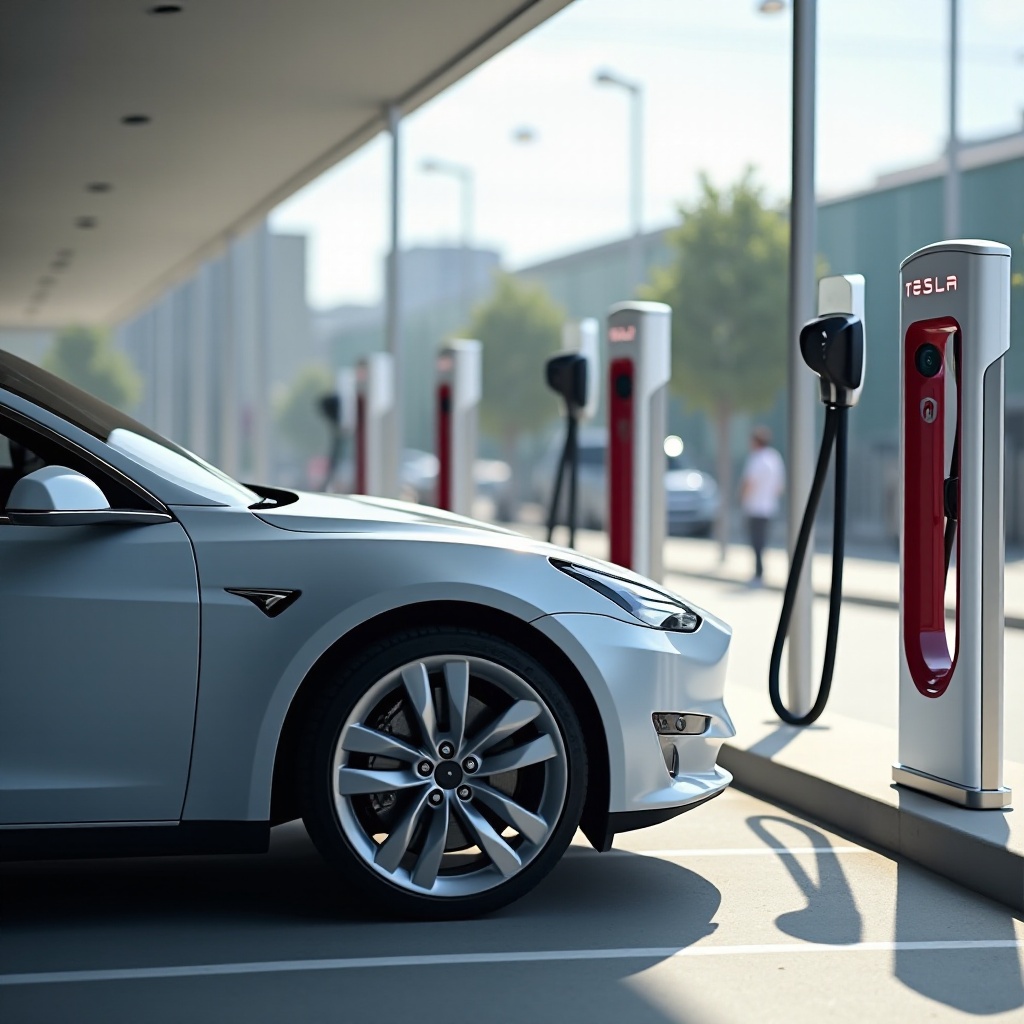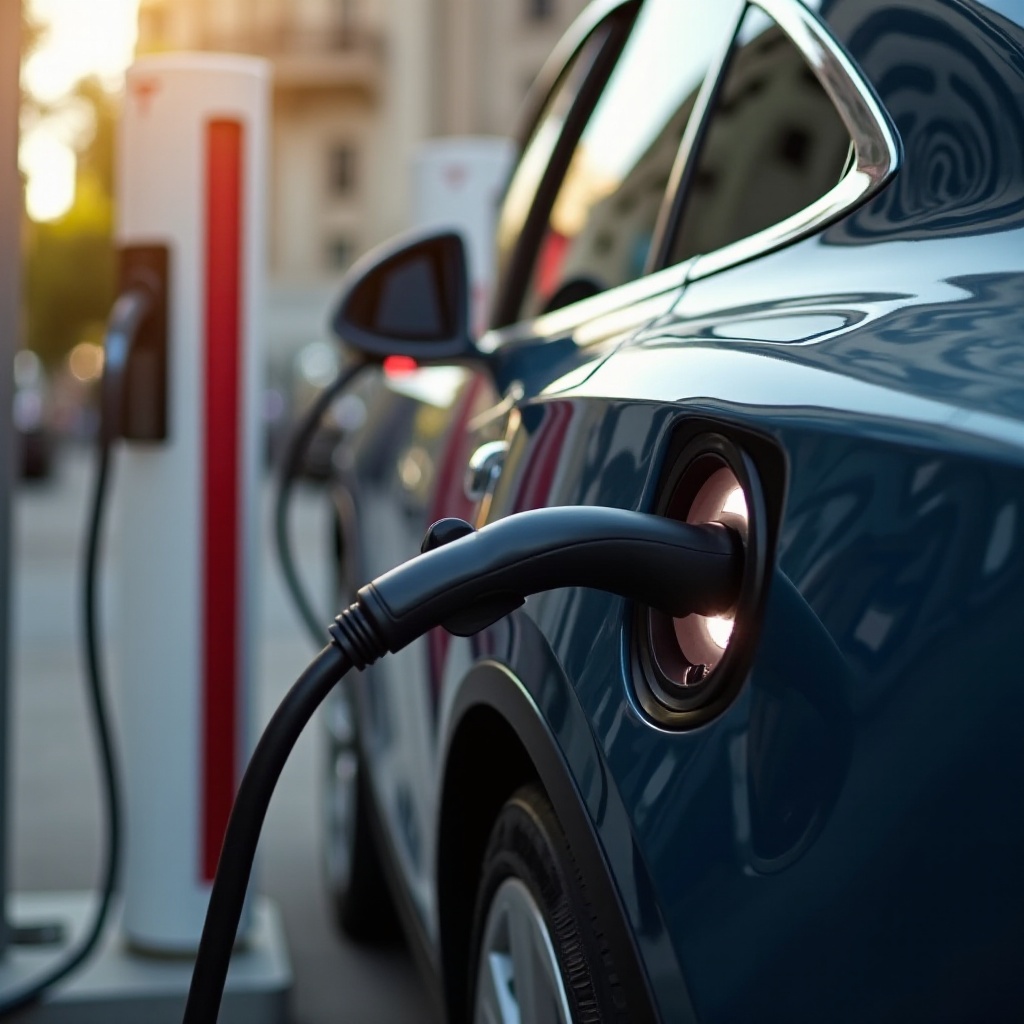Introduction
Electric vehicles (EVs) have surged in popularity, with Tesla standing out as a significant player in the market. As EV adoption grows, the need for accessible and reliable charging stations becomes crucial. However, the compatibility of Tesla vehicles with various EV stations often raises questions among owners and potential buyers. This blog delves into whether a Tesla can charge at any EV station, examining the intricacies of Tesla’s charging system, its compatibility with other stations, and essential tips for hassle-free charging.

Understanding EV Charging Basics
Electric vehicle charging stations are fundamental in maintaining the functionality and longevity of your EV. These chargers come in different levels: Level 1, Level 2, and DC Fast Charging. Level 1 chargers use standard household outlets (120V) and are the slowest, usually taking an entire day to charge. Level 2 chargers require 240V outlets—common for clothes dryers or electric stoves—and can fully charge most EVs in several hours. DC Fast Chargers, typically found at public charging stations, can charge EVs to 80% in around 30-60 minutes, depending on the vehicle.
Knowing the charging speed, type, and compatibility of these stations with your Tesla is essential for efficient and effective EV management. Understanding the differences among these chargers will pave the way for appreciating how Tesla’s system fits into the broader landscape of EV infrastructure.
Tesla’s Charging System Overview
Tesla has its unique charging ecosystem known as the Supercharger network, exclusively tailored for Tesla vehicles. Superchargers are Level 3 DC Fast Chargers, providing rapid charging capabilities significantly faster than standard Level 2 chargers. They can replenish a Tesla battery up to 80% within about 30 minutes, making them ideal for long road trips or quick top-ups.
Additionally, Tesla provides Wall Connectors for home installation, offering Level 2 charging for day-to-day use. Tesla’s proprietary connector, available in different regions, ensures seamless integration within their charging infrastructure. This differs from the Combined Charging System (CCS) and CHAdeMO connectors commonly used by other EV manufacturers. However, Tesla has developed adapters to bridge these gaps, increasing its charging flexibility.
Tesla owners benefit from the ease and speed of the Supercharger network, but understanding how Tesla integrates with non-Tesla EV stations is crucial for versatile and extensive EV usage.

Compatibility with Non-Tesla EV Stations
Tesla has made strides in increasing the compatibility of its vehicles with non-Tesla charging stations. While Tesla’s Superchargers use proprietary connectors, the company offers various adapters that enable Tesla vehicles to utilize other common charging standards such as CCS and CHAdeMO.
For Level 2 AC charging stations, Tesla vehicles can often charge without an adapter, provided the station uses the J1772 connector, as Tesla includes a J1772 adapter package. However, high-power charging (Level 3) at non-Tesla stations usually requires a specific adapter. The company’s progressive approach ensures its vehicles are not exclusively dependent on Superchargers, providing greater freedom for road trips and daily use.
Understanding the limits and possibilities of Tesla’s compatibility helps owners maximize their vehicle’s range and flexibility, essential for seamless and worry-free travel.
How to Charge a Tesla at Different EV Stations
Types of Adapters and Their Usage
To ensure compatibility with a variety of EV charging stations, Tesla offers several adapters:
- J1772 Adapter: Commonly used for Level 2 AC charging.
- CHAdeMO Adapter: Allows access to many high-speed DC chargers.
- CCS Combo 1 Adapter: For fast charging at stations using the Combined Charging System.
These adapters bridge the gap between Tesla’s proprietary system and other EV charging networks.
Finding Compatible Charging Stations
Identifying which stations can charge your Tesla involves:
– Utilizing apps like PlugShare or A Better Routeplanner to find nearby stations.
– Checking the type of connectors offered by the station.
– Verifying if the station supports the adapters you have.
Planning ahead ensures you can locate compatible stations efficiently, preventing potential delays during trips.
Step-by-Step Charging Instructions
Here’s how to charge your Tesla at different EV stations:
1. Locate a Compatible Charging Station: Use navigation apps or Tesla’s onboard map.
2. Select the Needed Adapter: Ensure you have the right adapter for the station.
3. Connect the Adapter to the Station’s Plug: Attach the station’s connector to your Tesla adapter securely.
4. Plug the Adapter into Your Tesla’s Charging Port: Firmly insert the adapter into your Tesla’s charging port.
5. Start the Charging Session: Depending on the station, you might need to use an app, an RFID card, or follow on-screen instructions to begin charging.
6. Monitor the Charging Process: Keep an eye on the charging status via your Tesla app or the vehicle’s display.
Following these steps ensures a smooth, efficient charging experience at any station compatible with your Tesla.

Cost Considerations
Charging your Tesla at different EV stations comes with varying costs. Tesla Superchargers are often more expensive than home charging, though they offer the convenience of rapid charging. Public Level 2 stations may offer free charging or charge a nominal fee. Fast chargers like CCS or CHAdeMO also vary in price, often ranging from $0.20 to $0.69 per kWh.
It’s advisable to check the rates at individual stations and consider subscription programs or memberships that can offer discounted rates. Being aware of the costs associated with charging at various stations helps manage your EV’s operational costs effectively.
Conclusion
Tesla’s advanced charging system and the availability of adapters for non-Tesla stations ensure a versatile and comprehensive charging experience. Understanding the basics of EV charging, Tesla’s compatibility with other stations, and practical steps for charging at different EV stations can significantly enhance the convenience and utility of owning a Tesla. Properly utilizing these resources promotes a seamless and stress-free EV ownership experience.
Frequently Asked Questions
Can I charge my Tesla at any EV station for free?
While some public Level 2 stations offer free charging, most fast-charging stations, including Tesla Superchargers, require payment.
Do non-Tesla charging stations charge slower?
Non-Tesla stations may offer varying speeds, often slower than Tesla Superchargers, especially if using an adapter.
Are Tesla adapters universally compatible with all EV stations?
Tesla adapters increase compatibility but are not universal. Always verify the station and adapter compatibility before use.


